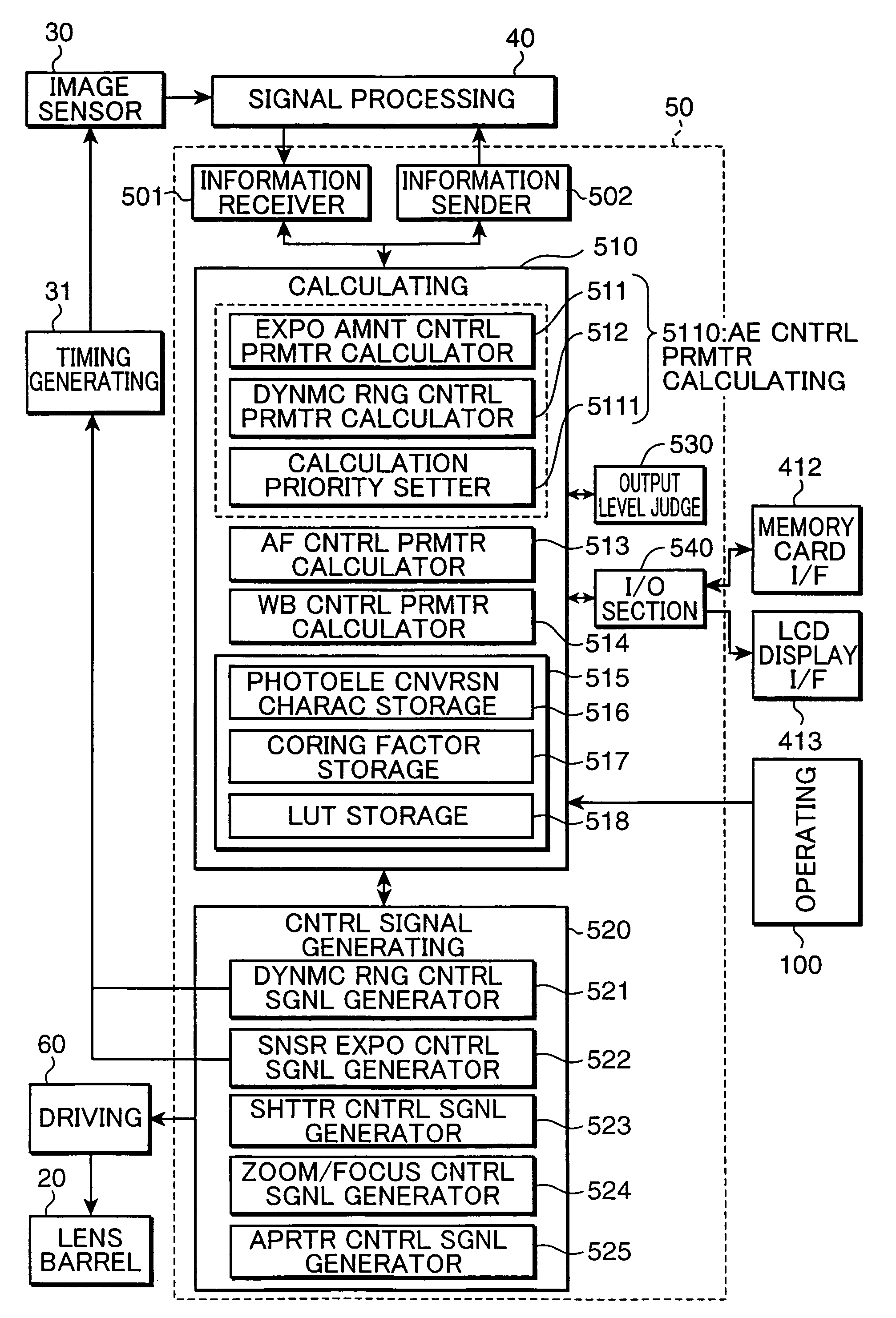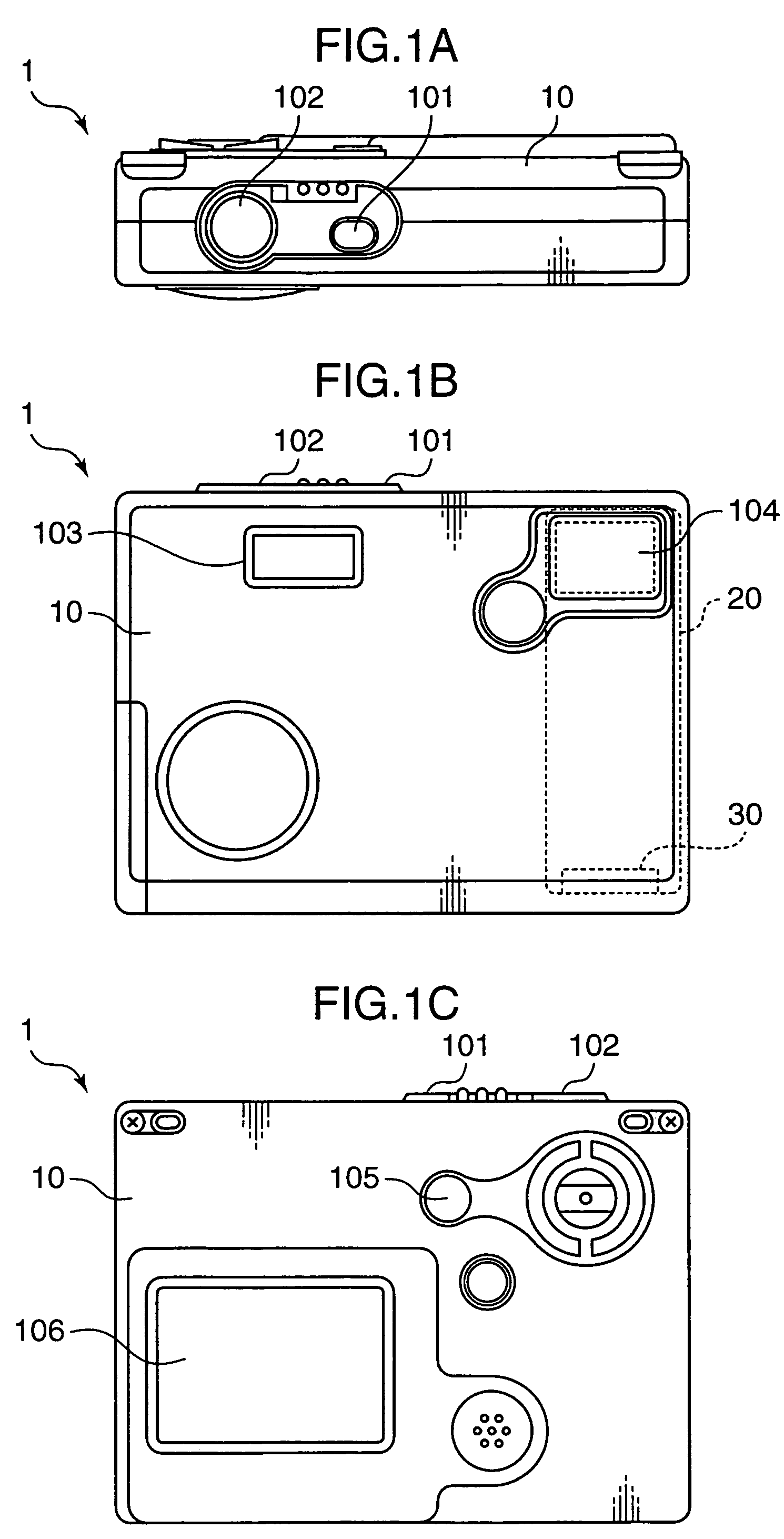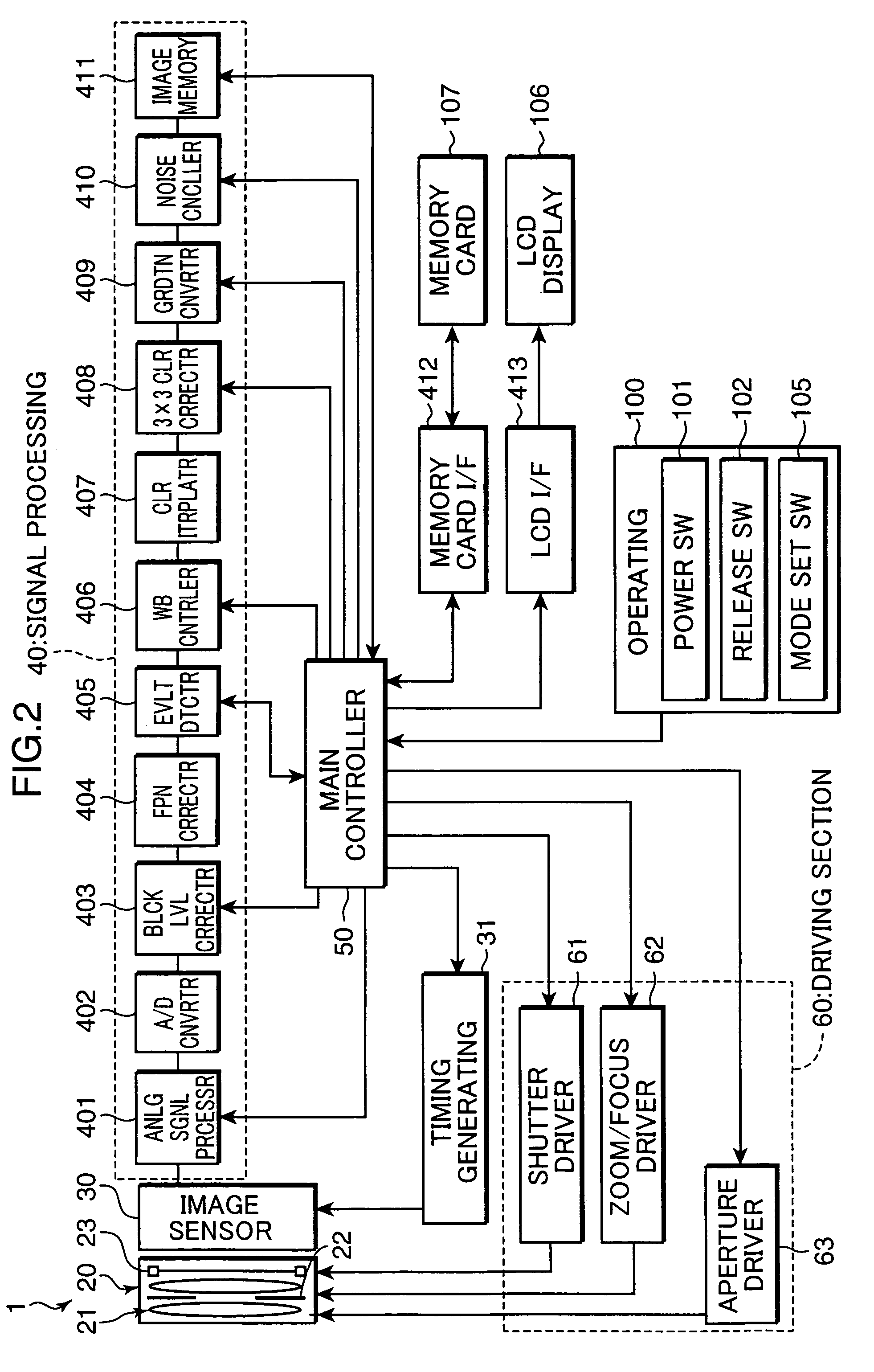Image sensing apparatus
a technology of image sensing and apparatus, applied in the field of image sensing apparatus, can solve the problems of narrow dynamic range and poor contras
- Summary
- Abstract
- Description
- Claims
- Application Information
AI Technical Summary
Benefits of technology
Problems solved by technology
Method used
Image
Examples
first embodiment
[0166]In the following, the first embodiment of the invention is described referring to FIGS. 1 through 29.
[0167](Description on External Construction of Image Sensing Apparatus)
[0168]FIGS. 1A through 1C are diagrams showing external appearance of a compact digital camera 1 to which an image sensing apparatus as the first embodiment is applied, wherein FIG. 1A is a top plan view, FIG. 1B is a front view, and FIG. 1C is a rear view. The digital camera 1, as an example of image sensing apparatuses, has a power supply switch 101 and a release switch 102 on a top part of a camera body 10, a flash section 103 and a taking lens aperture 104 on a front part thereof, and various operation buttons such as a mode setting switch 105, and a LCD section 106 comprised of a liquid crystal display (LCD) monitor on a rear part thereof A retractable lens barrel 20 is provided inside the camera body 10, as well as various parts constituting the camera body 10.
[0169]The power supply switch 101 is a pre...
second embodiment
[0397]Next, the second embodiment is described referring to FIGS. 30 through 36.
[0398]In the first embodiment, described is the AE control of prioritizing the exposure amount control parameter calculation or the dynamic range control parameter calculation, namely, the exposure amount control or the dynamic range control. In the second embodiment, AE control of securing a predetermined sensor output corresponding to a target subject luminance on a priority basis (hereinafter, this is called as “target level prioritizing system” or “target level prioritizing mode”, which corresponds to the exposure amount control parameter calculation prioritizing mode in the first embodiment), or AE control of securing a dynamic range on a priority basis (hereinafter, this is called as “dynamic range prioritizing system” or “dynamic range prioritizing mode”, which corresponds to the dynamic range control parameter calculation prioritizing mode in the first embodiment) is carried out by performing a f...
third embodiment
[0448]In the following, the third embodiment of the invention is described referring to FIGS. 37 through 52.
[0449]The third embodiment is different from the first and the second embodiments in the AE controlling method. The AE control in the first embodiment is performed by the exposure amount control as shown in FIG. 18A, and by the dynamic range control as shown in FIG. 18B. The exposure amount control (A) is performed based on control of the exposure time, namely, the integration time of the image sensor 30, or the opening time of the shutter 23, and based on control of the aperture value, namely, the aperture area of the diaphragm 22, and the dynamic range control (B) is performed based on control of the photoelectric conversion characteristic, namely, the position of the inflection point, as summarized below.
[0450](A) Exposure amount control based on exposure time control, i.e., control of the integration time or the shutter opening time, or based on aperture control, i.e., con...
PUM
 Login to View More
Login to View More Abstract
Description
Claims
Application Information
 Login to View More
Login to View More - R&D
- Intellectual Property
- Life Sciences
- Materials
- Tech Scout
- Unparalleled Data Quality
- Higher Quality Content
- 60% Fewer Hallucinations
Browse by: Latest US Patents, China's latest patents, Technical Efficacy Thesaurus, Application Domain, Technology Topic, Popular Technical Reports.
© 2025 PatSnap. All rights reserved.Legal|Privacy policy|Modern Slavery Act Transparency Statement|Sitemap|About US| Contact US: help@patsnap.com



